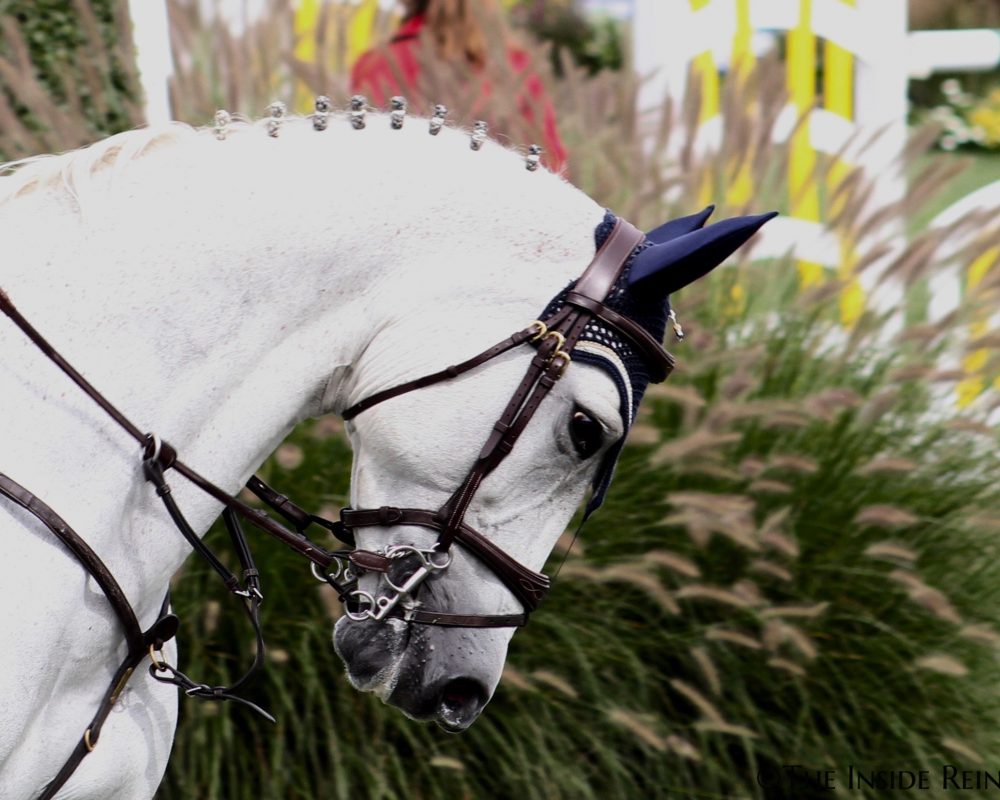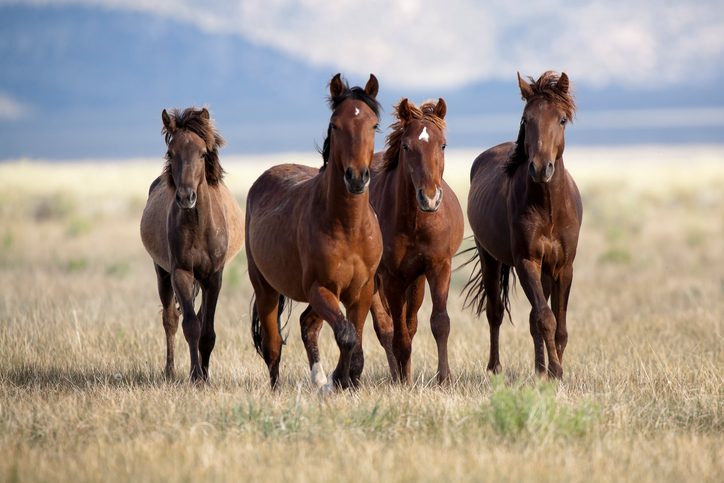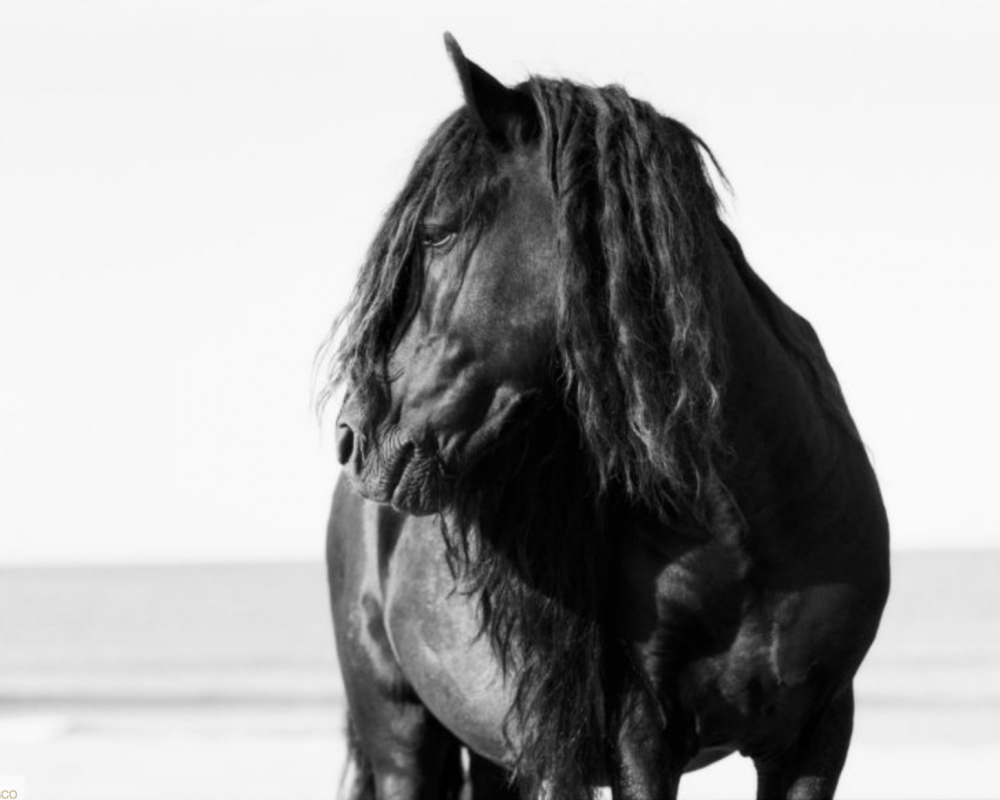This week’s feature is The Lost Quixotes: the Art of Collecting the Riding Horse, a film by Paul Belasik of the Pennsylvania Riding Academy.
In this 48-minute documentary, Belasik transports viewers back to the sixteenth century where he introduces the original great Dressage masters, including Italian trainer Giovanni Battista Pignatelli. With those historic foundations in place, Belasik then puts theory to practice, using modern day bio-mechanical technologies to scientifically prove his theory behind proper collection.
Belasik also sits down with horse behavior expert, the late Dr. Jay Kirkpatrick, at Assateague Island National Park. Dr. Kirkpatrick’s study of herd behaviors offers valuable insights that can be directly applied to training the domestic horse, as well as providing some entertaining stories about the craftiness of wild stallions.
At the conclusion of the film, Belasik and his assistant Andrea Velas demonstrate various dressage exercises to help achieve proper collection. Much more than a how-to video, The Lost Quixotes marries history, state-of-the-art technological research, and the study of wild horse behavior, with Belasik providing expert narration throughout.
Here’s our interview with Mr. Belasik:
Where did your love of horses begin? What drew you to classical riding?
I was an animal crazy kid. I had monkeys growing up and did falconry. I started riding when I was twelve and not long after that, I began reading about dressage. I thought it was unbelievable; the sophistication of the communication between two species. I was hooked and still am.
The Lost Quixotes are all Europe-based, which makes sense given their
time in history. Do you feel there is a difference between American and European riding styles today?
I don’t feel that there are huge differences between American and European riding styles, or between any country’s riding style in the elite levels of dressage today. If certain countries seem to lag behind, its just because in Europe there is a large concentration of better teachers. The pool of good riders is much deeper.
In the film, you talk about Giambattista Pignatelli, a sixteenth-century Italian dressage master who educated most of Europe’s great riders of the time. Is there a modern day Pignatelli?
No. With the airplanes, films, and the onset of the internet, the world became a much smaller place. You can see Italian, French, German, or the Spanish Riding School in pretty much one day’s travel or a few clicks of the keyboard. This has gone a long way to breaking down nationalistic riding styles and parochial barriers. To see really good work becomes both competition and inspiration. The result is more high level riding. In Pignatelli’s time, there was only a small handful of experts. Only people with great resources could witness the riding or learn from those teachers. As elite as dressage is, it is oddly more democratic today.
You agree with Alois Podhasjky that dressage is a combination of
art and science, going so far as to participate in biomechanic
research on your own horse to prove horses weight should be on their
haunches. Since that test, have more people begun to agree with your
theory? Or are too many horses still being ridden on the forehand?
Not as many people agree with my theory as I would like! There are still very many horses being ridden on the forehand. I have just written a series of articles about some fundamental problems in elite dressage. The second in the series is all about this very question of poor collection and the misunderstanding of some elementary biomechanics. If you want to read the articles, they are on my website www.paulbelasik.com under Media/Articles.
Are there certain conformation issues that prevent horses from
achieving collection? Or can all horses, with the right training,
achieve some level of collection?
There can be moments of collection for any horse, but I don’t think that all horses can achieve being ridden in regular intervals of collection. There are lots of conformation issues that prevent a horse from achieving collection, such as an overly long back, being very weak in the psoas and iliopsoas, a very heavy head and neck, very straight hind legs or inflexible hind legs, and combinations of these features. Also, psychological issues can preclude collection. Some horses with a great work ethic overcome all kinds of conformational faults, and some horses that seem to be perfect specimens won’t try to work hard at all. Part of the fun is this mystery. You study and study and in the end, you need a little luck.
Your interview with feral horse behaviour expert Dr. Kirkpatrick
was very interesting. Did his perspective add to your training? Did
it cause you to change anything?
My interview with Dr. Kirkpatrick added a tremendous amount to my training. It changed a lot of things in subtle ways. I began to understand equine behaviors better as well as things from the horse’s point of view. I also began to understand why I did certain things with horses. They weren’t accidents. There were reasons behind my trials and errors. There was a lot of technical, scientific advice from Dr. Kirkpatrick, but maybe the most important was that his love for horses came through. The more he knew about them, the more he seemed to be in awe of them. If someone that smart is telling you to pay attention, you should listen. I certainly did.
Toward the films end you mention that people who ride for sport are
doing it for the affirmation of others, less so for the connection to
the horse. Is there a way to balance the two or are you against
competition?
I am not against competition. The difference between competing against and being inspired by your contemporaries is a very fine line. Competing can be a good test of training; unfortunately, it has little connection to scores or results. I think the greatest success a rider can have in competition is to achieve a balance between a high level of performance and an ethical one. We live in a culture where this is becoming more and more rare. Riders succumb to the pressures to seem successful and they forget what drew them to riding in the first place; the love and life around horses. A rider or a horseman, those are two very different animals to me.
Talk a bit about your work at the Pennsylvania Riding Academy.
My work at the Pennsylvania Riding Academy is multifaceted. It is a for-profit business. We teach, train horses, and buy and sell horses. My strongest bias is educational. Somehow I have been shackled with this idea that the only way to repay my debt (which is considerable) to the masters who have helped me is to try to help others. We have various arrangements for students. The most intense is the internship program. Here, up to two interns agree to work for a solid year at the farm. They bring a horse to train under our daily supervision, have private lessons with me, work in the barn and are involved in every aspect of horse management. We also have long and short courses for those who would like to come stay at the farm for shorter periods of time, usually a week or two. These are intensives that have drawn students from all over the world. Their time here is mainly geared toward position, but they are also able to observe the many horses in training and have access to my library. We usually have around twenty horses in training at all levels, from breaking in three year olds to Grand Prix. We train by classical principles, which I have written about extensively. Students are encouraged to watch the training; we try to make everything transparent and are happy to answer questions and discuss theory. Its not unusual for our neighbors to walk by and sit down on one of the benches to watch us practice. I guess, as the boss, I try to make sure nothing they might see would frighten little children. But we are realists; discipline is not an excuse for cruelty. It becomes a platform for mutual respect. What we do at the here at the Pennsylvania Riding Academy really represents my 45 years of experience with horses and the traveling I did to different riding schools to understand different riding systems around the world. I have spent my life trying to understand dressage and help other people understand it and get better at it.
For more information about Mr. Belasik and the PA Riding Academy visit their Facebook page here.



Leave a Reply